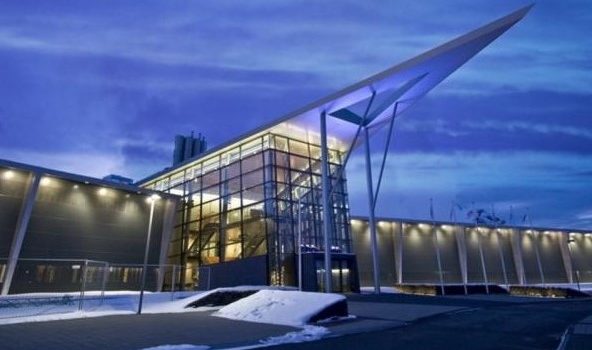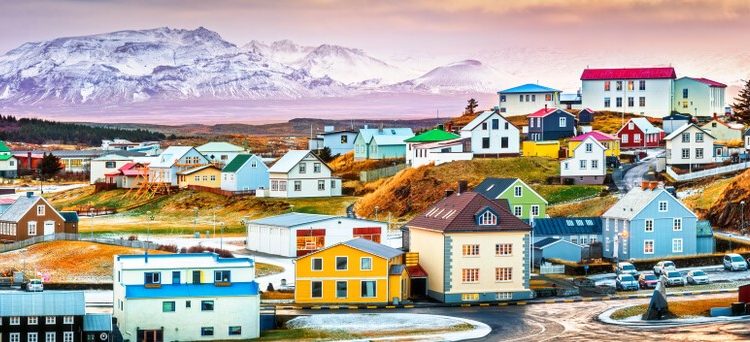Geothermal Energy Exhibition at Hellisheiði Power Plant
The Geothermal Energy Exhibition at Hellisheiði Power Plant is a state-of-the-art look into the
harnessing of geothermal energy in Iceland. The plant is a striking example of how geothermal
energy is harnessed in a sustainable manner in Iceland and a showcase for the rest of the world.
Experienced guides are on-hand to provide informative presentations backed by multimedia shows
about sustainable green energy as a global energy source.
You can enjoy their coffee shop and browse through a selection of educational material in the souvenirs
corner. Open daily from 09:00 – 17:00.
The Hellisheiði Power Plant is about 20 min. drive from Reykjavík on Route 1 towards Hveragerdi.
A fully licensed coffee shop with specially brewed coffee, sandwiches, etc.
A souvenirs corner with a selection of educational material on geothermal energy, including DVDs,
books, a Hengill hiking map, etc.

Reykjavík Arts Festival opens May 20
Reykjavík Arts Festival will continue throughout June 5 with a variety of events taking place
in and around Iceland’s capital. This year, emphasis will be placed on the performing arts.
On the festival’s website, the program is described as, “a feast of music and dance,
brimming with exciting concerts of all kinds, striking dance performances and colorful theatre
experiences for all ages.”
This year, festival goers will be able to enjoy performances in Harpa, the brand new concert
and conference hall on the Reykjavík seaside, where one of the highlights will take place on
May 21 when German tenor Jonas Kaufmann performs with the Iceland Symphony Orchestra
in a gala concert in the main music hall, Eldborg.
Another highlight of the festival in Harpa will be a performance by beloved American soprano
Barbara Bonney on June 5.
Other international artists include Ojos del Brujo, Beijing Dance Theatre, Tomi Ungerer,
The Krakow Sinfonietta, Louise Bourgeois, Michel Houllebecq, Tony Allen and Les Slovaks
Dance Collective.
Established in 1970, the Reykjavík Arts Festival is Iceland’s premier cultural festival,
bringing together the best in local and international theatre, dance, music and visual art,
as stated on visitreykjavik.is.
The program offers a variety of exhibitions, concerts, dance performances,
theatre and opera. Along with its focus on Icelandic culture past and present,
the festival hosts many outstanding international artists and performers.
and annually from 2004. The Festival is one of Northern Europe’s the oldest and most
respected arts festivals. It is organised by an Artistic Director, appointed by the Board.
The three Board members are appointed, respectively, by the Minister of Culture
and Education, the Mayor of Reykjavik and the Festival´s Council of Representatives.
The Festival is financed by the Government and City Council, box office income and
private sponsors, and is presided over by the Minister of Culture and the Mayor of
Reykjavík on a rotating basis. Vladimir Ashkenazy, one of the founders of the Festival,
has been honorary president from the outset. The patron is the President of Iceland,
Ólafur Ragnar Grímsson. The purpose of the Festival is to promote Icelandic and
international culture in all fields of art. The programs offer a range of concerts, theatre
performances, exhibitions, dance and opera. In combination with its focus on Icelandic culture,
past and present, the Festival has hosted many outstanding international artists and performers.


Iceland’s contribution the world’s first global art project
The artist Bjargey Ólafsdóttir’s polar bear was Iceland’s contribution the world’s first global art project, large enough to be seen from space.
The project, called 350 EARTH, is taking place in 18 locations on the front lines of climate change – from glaciers to drying river deltas to endangered forests. It will demonstrate the massive public support for bold climate action and the role that art can play in inspiring humanity to take on our greatest challenge: protecting the planet on which we live.
The Polar Bear was intended to inspire people in Iceland and worldwide to think about their environment and how they can play a role in protecting it. The Polar Bear was created using organic red colouring, only a couple of millimetres thick on the snow. By the time the team was leaving the wind was blowing fresh snow over the bear, and after the weekend it will have totally disappeared – but hopefully polar bears and glaciers will still be around for generations.
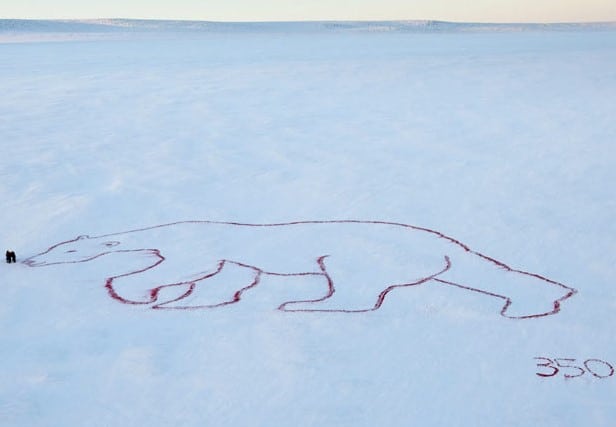
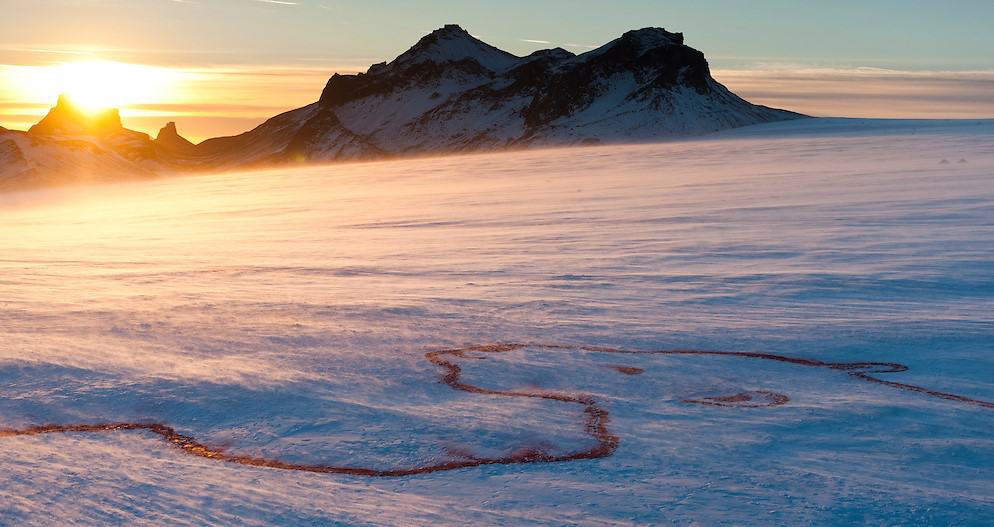
Polar bears and glaciers are synonymous with climate change in the northern reaches of the northern hemisphere and we wanted to draw attention to the plight they face due to climate change. Glaciers in Iceland are losing mass each year, and if the temperature rises as it is predicted to, Langjökull will melt to 15% of its current size by the end of the century. This will have significant impacts on Iceland’s hydrological system and melting glaciers worldwide will contribute to sea level rise, putting people in coastal areas and small islands at risk.
The project was a collaborative effort, involving the time and effort and generosity of many. It would not have been possible without Mountaineers of Iceland, Icelandair Scandinavia, Sagafilm, N66, Norðurflug, Málning, Kjarnavörur-Innbak, Garðheimar and the volunteers who braved fierce conditions to make it happen.
Iceland One of 10 Best Whale Watching Destinations
Iceland is among the 10 best destinations worldwide for whale watching, according to an article in The Telegraph (UK).
“North-east Iceland offers whale-watching trips on beautifully restored fishing vessels. Minke whales and white-beaked dolphins are regularly seen and occasionally humpback and blue whales. Also worth a visit is Husavik’s fascinating Whale Museum, located by the port. The first of its kind in Iceland, it has interpretive displays on the cetacean species found around Iceland, along with whale skeletons and other exhibits.”
Other top 10 destinations are Alaska, Azores, California, New Zealand, Norway, Scotland, South Africa, Spain and Vancouver.
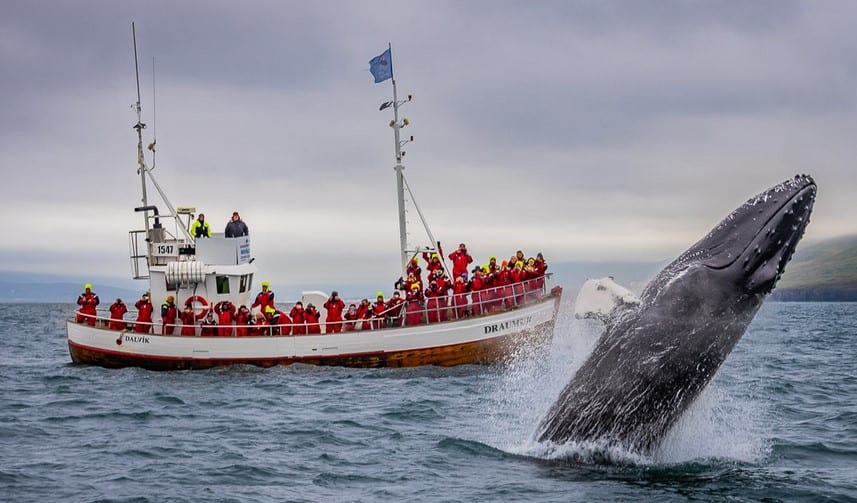
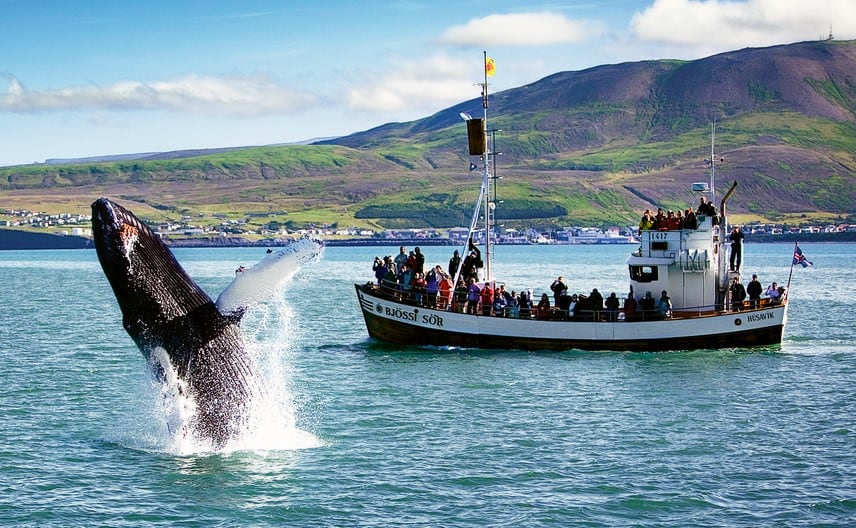
West Iceland
Natural Variety
In the West and the West Fjords, one can read the geological history of Ice-land, from its formation 15-16 million years ago until about the time of the settlement in the ninth century, which is when volcanic activity ceased in the region. The oldest rock formations are found at Kögur in the West Fjords, the youngest in the inner reaches of Borgarfjörður, and the region has an unusually wide variety of natural fea-tures.
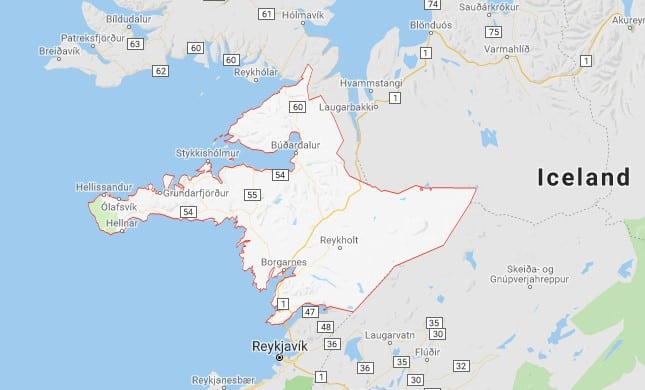
Every kind of volcano is found here, and water flows from the earth in every form, from cool, sparkling miner-al water to Europe’s most voluminous hot spring, Deildartunguhver, from which water pours at 97°C at a rate of 180 litres per second. The clearest sign of volcanism is the perfectly formed crater of Snæfellsjökull, with its glacial cap, at the tip of the Snæfellsnes peninsula, to which various mysterious powers have been attributed. This is now a National Park, and Snæfellsnes is now benchmarked as a Green Globe 21 sustainable community with emphasis on tourism.
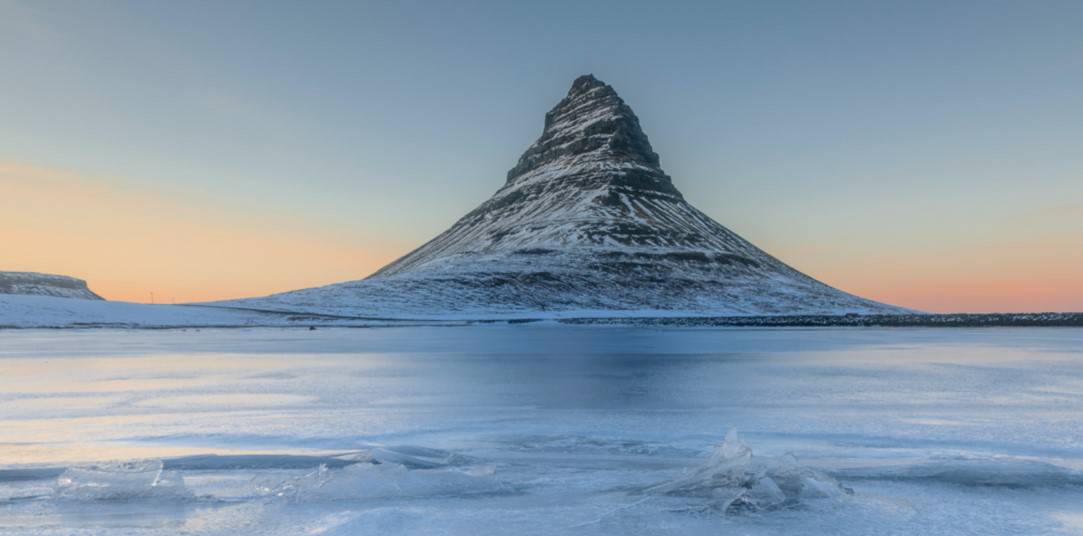
In Stykkishólmur, New York Artist Roni Horn has opened the “Library of Water”. The main room of the library features a series of 24 glass columns filled with water, originally collected as ice from various Icelandic glaciers. Words are written on the floor, reflecting in the glass.
The birdlife of the region is also varied. Breiðafjörður is a mecca for birdwatchers, who may even spot the monarch of Icelandic birds, the white-tailed eagle.
In olden times West Iceland and Breiðafjörður were flourishing agricultural regions with plentiful food resources. Many of the Icelandic sagas took place here and in the West Fjords. Historic sites in the region include Reykholt, home of the medieval chieftain/scholar Snorri Sturluson, and the town of Borgarnes with its Settlement Centre, where visitors can see two exhibitions featuring audio-taped narrative: one on the settlement of Iceland, and the other on Egill Skallagrímsson, one of the most colourful personalities of the Age of Settlement. Another intriguing destination is the reconstructed saga age farmstead at Eiríksstaðir, home of Erik the Red. Eiríksstaðir is also reputed to be the birthplace of Eiríkur’s son Leif the Lucky, who found the New World.
Two universities in Borgarfjörður have been growing rapidly in recent years: the Bifröst School of Business and the Agricultural University at Hvanneyri.


